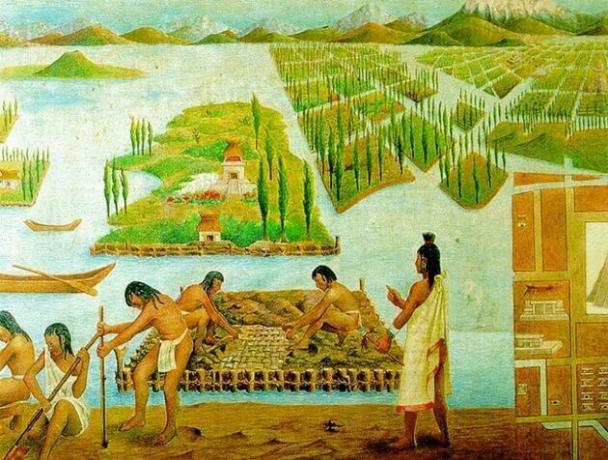You mayas they formed one of the great societies that inhabited pre-Columbian America.
They lived in the region corresponding to what is now the Yucatán Peninsula in Mexico, as well as Belize and parts of Guatemala and Honduras in Central America.
Political Organization of the Mayans
The Mayans did not build a unified empire like the Aztecs and the Incas.
They organized themselves politically into city-states which, together with the villages, formed independent political units, each with its own degree of development.

In each state authority and power were exercised in the name of a god.
The head of government of the cities was advised by a council and assisted by a group of officials publics responsible for maintaining public order, such as village chiefs, military chiefs among others.
Mayan Economy
The economy of the Mayan civilization was basically agricultural. They cultivated corn, a product considered sacred, cotton, cocoa and agave.

They completed their economic activities with hunting, fishing and handicrafts. The mode of production was collective, the land was not private property and theoretically the State was the owner of all land.
As a member of the village, every peasant had the right to use them and make a living from them, with the obligation to pay the collective tax levied by the State.
The state also appropriated the peasants' workforce, forcing them to work for free in the construction of palaces, temples and large irrigation works and dams.
Mayan Society and Culture
The grandeur of Mayan society was built with the work of a controlled and disciplined population. The social organization was rigid. existed social layers like:
- The highest strata were the royal family, the occupants of the main government posts, and the merchants.
- In the second tier were the servants of the state, such as tax collectors, those responsible for defense and the leaders of the ceremonies.
- In the third layer were the manual workers and the farmers.
- Finally, the enslaved, who were usually prisoners of war.
The most powerful social group, the priests, monopolized writing and scientific knowledge, mainly astronomy and mathematics.
The Mayans believed that humanity's destiny was ruled by the gods, so religion was present in all cultural activities of the people.
They developed their own writing system, until today almost undecipherable, based on the representation of objects and ideas. It is known that he had a high degree of abstraction.

Mayan religion
The Mayans believed that fate was ruled by the gods. Itzamna, lord of the sky, was the most important god. The gods of the Moon, Sun, rain, wind, death and life were also worshiped, in addition to deities linked to agriculture and hunting.

The deities were offered various foods, sacrifices of animals and humans, in ceremonies that included dances and theatrical performances.
Decline of Mayan Civilization
From the 9th century onwards the slow and continuous decline of the Mayan civilization began. There are several hypotheses regarding this fact.
Some scholars believe it may have been due to wars, infighting, invasions, or mismanagement regarding land exploitation.
Soil depletion would have made production insufficient for consumption needs and forced the Mayans to abandon their main cities.
What is stated, with certainty, is that when the Spaniards arrived in America, the Mayan civilization no longer existed.
Read too:
- Incas
- Aztecs
- spanish america
- Independence of Spanish America
- First Peoples of America
- Pre-Columbian Peoples


